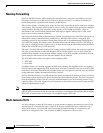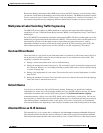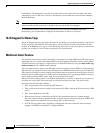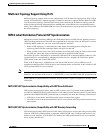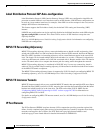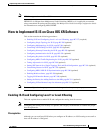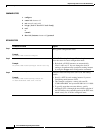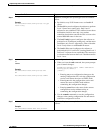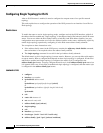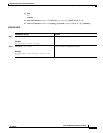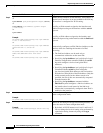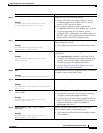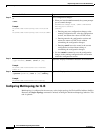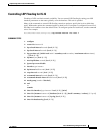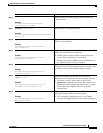
Implementing IS-IS on Cisco IOS XR Software
How to Implement IS-IS on Cisco IOS XR Software
RC-280
Cisco IOS XR Routing Configuration Guide
OL-14356-01
Configuring Single Topology for IS-IS
After an IS-IS instance is enabled, it must be configured to compute routes for a specific network
topology.
This task explains how to configure the operation of the IS-IS protocol on an interface for an IPv4 or
IPv6 topology.
Restrictions
To enable the router to run in single-topology mode, configure each of the IS-IS interfaces with all of
the address families enabled and “single-topology” in the address-family IPv6 unicast in the IS-IS router
stanza. You can use either the IPv6 address family or both IPv4 and IPv6 address families, but your
configuration must represent the set of all active address families on the router. Additionally, explicitly
enable single-topology operation by configuring it in the IPv6 router address family submode.
Two exceptions to these instructions exist:
1. If the address-family stanza in the IS-IS process contains the adjacency-check disable command,
then an interface is not required to have the address family enabled.
2. The single-topology command is not valid in the ipv4 address-family submode.
The default metric style for single topology is narrow metrics. However, you can use either wide metrics
or narrow metrics. How to configure them depends on how single topology is configured. If both IPv4
and IPv6 are enabled and single topology is configured, the metric style is configured in the
address-family ipv4 stanza. You may configure the metric style in the address-family ipv6 stanza, but
it is ignored in this case. If only IPv6 is enabled and single topology is configured, then the metric style
is configured in the address-family ipv6 stanza.
SUMMARY STEPS
1. configure
2. interface type number
3. ipv4 address address mask
or
ipv6 address ipv6-prefix/prefix-length [eui-64]
or
ipv6 address ipv6-address {/prefix-length | link-local}
or
ipv6 enable
4. exit
5. router isis instance-id
6. net network-entity-title
7. address-family ipv6 [unicast]
8. single-topology
9. exit
10. interface type instance
11. circuit-type {level-1 | level-1-2 | level-2-only}
12. address-family {ipv4 | ipv6} [unicast | multicast]



